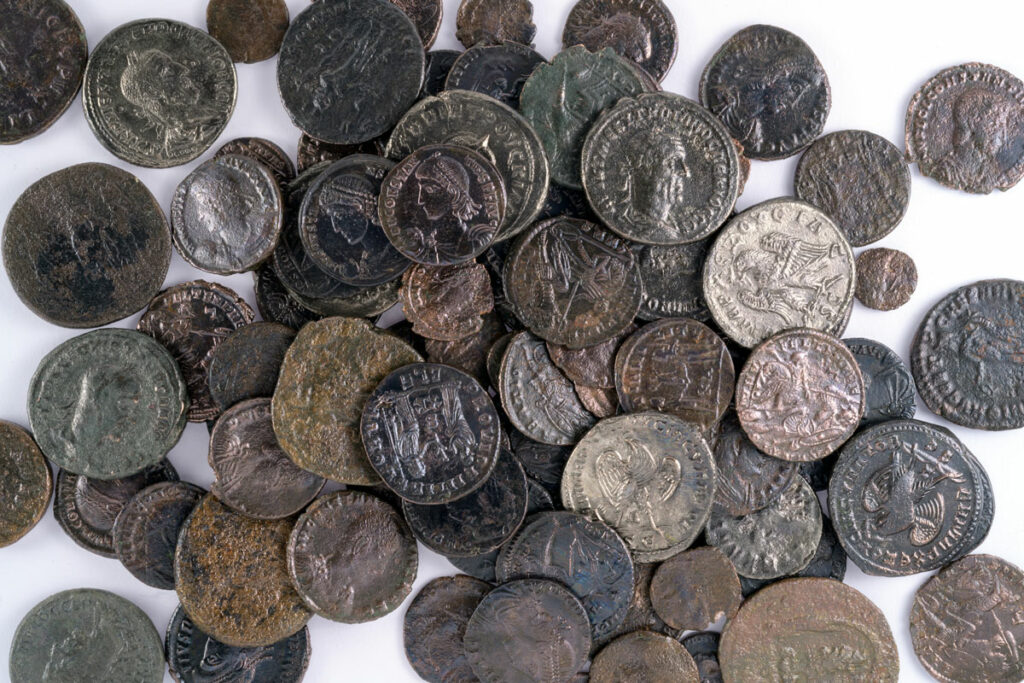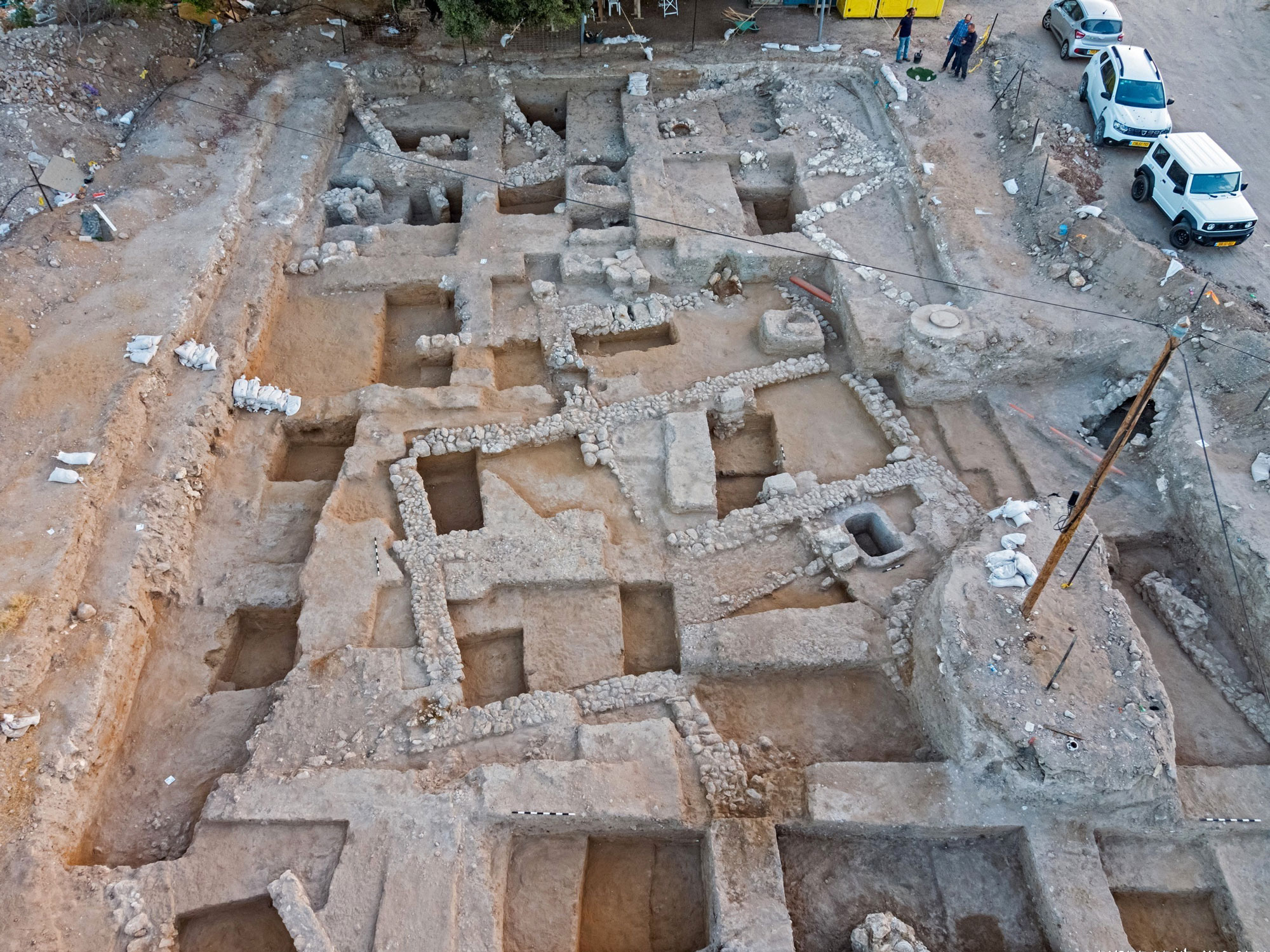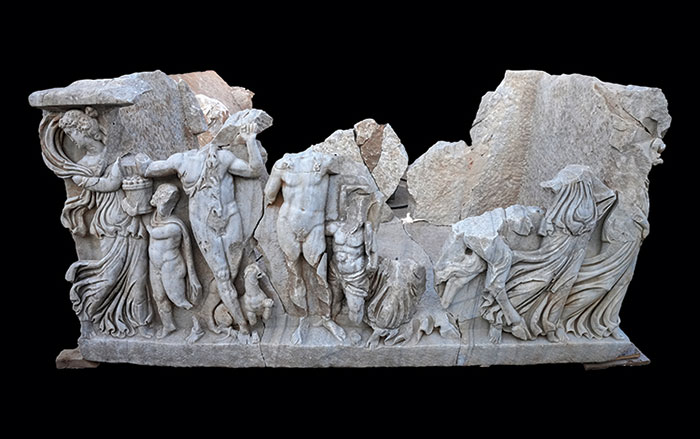
TEL AVIV, ISRAEL—A hoard of 1,700-year-old coins has been discovered in central Israel by researchers from the Israel Antiquities Authority (IAA), according to a Live Science report. The 94 silver and bronze coins, which date to between A.D. 221 and 354, had been hidden in a public building in Lod, a city known to the Romans as Diospolis. The building is thought to have been destroyed during the last known Jewish revolt against Roman rule, known as the Gallus Revolt, for Flavius Claudius Constantius Gallus, who ruled the eastern provinces of the Roman Empire at the time. The cities of Tiberias and Sepphoris were attacked, in addition to the city of Lod. “This is essentially an emergency hoard, meaning a hoard that people hide in anticipation of a catastrophic event,” said IAA archaeologist Mor Viezel. Many of the coins were minted during the years of the revolt, from A.D. 351 to 354, he added. To read about swords uncovered in Israel that may date to an earlier revolt against Roman rule, go to "Cave of Swords," one of ARCHAEOLOGY's Top 10 Discoveries of 2023.











